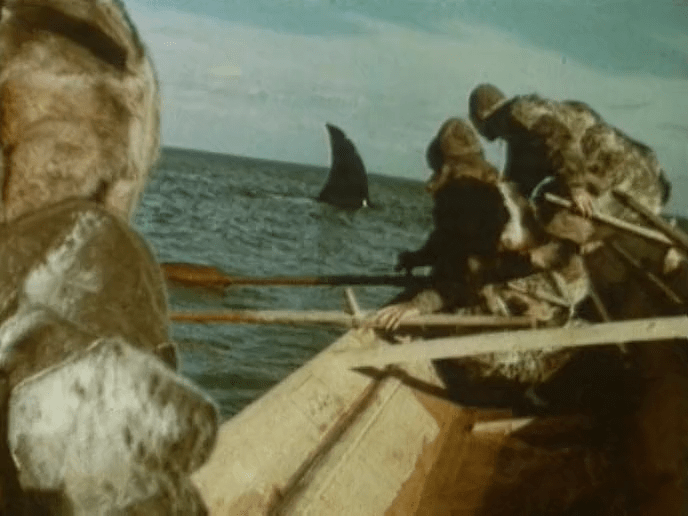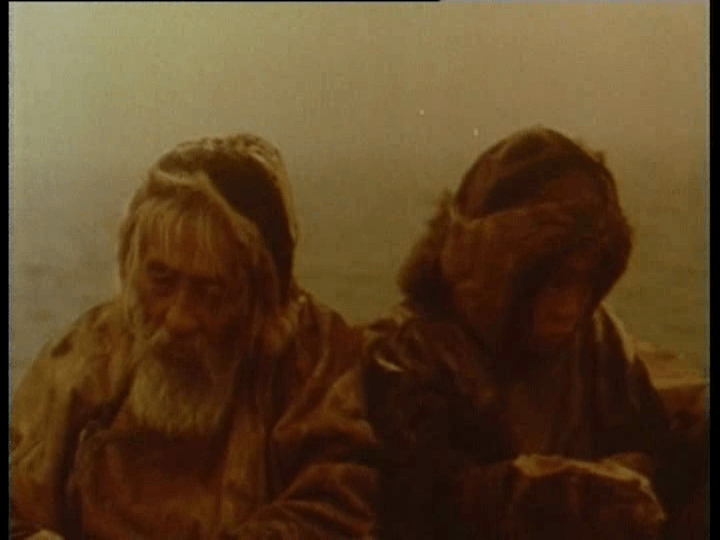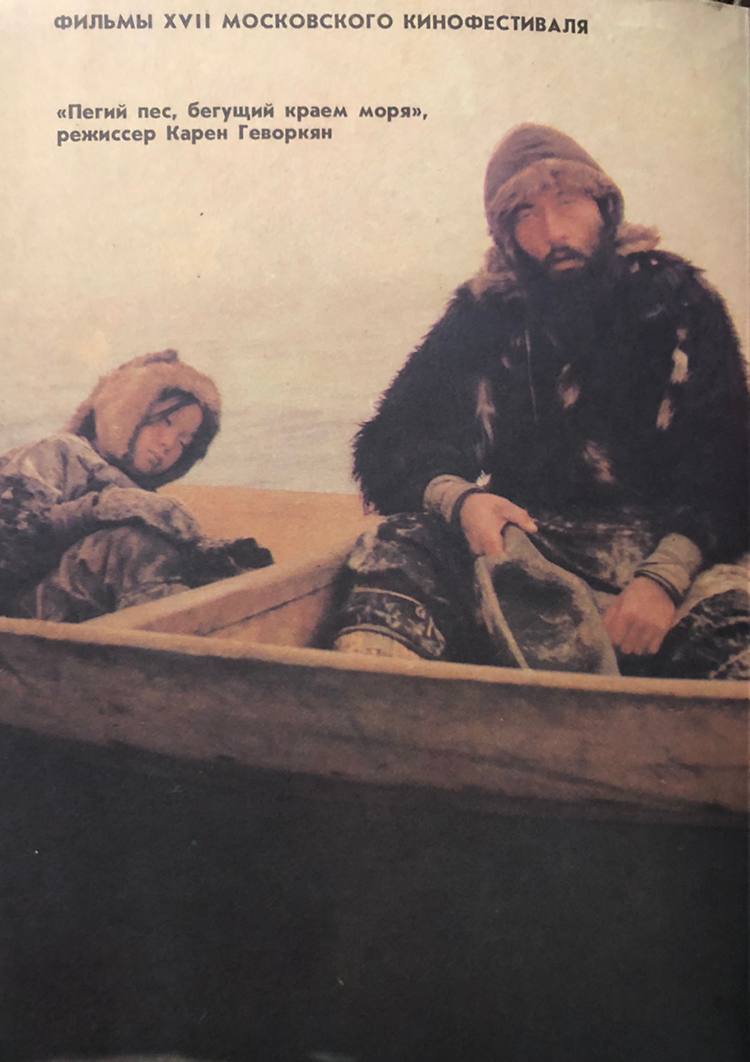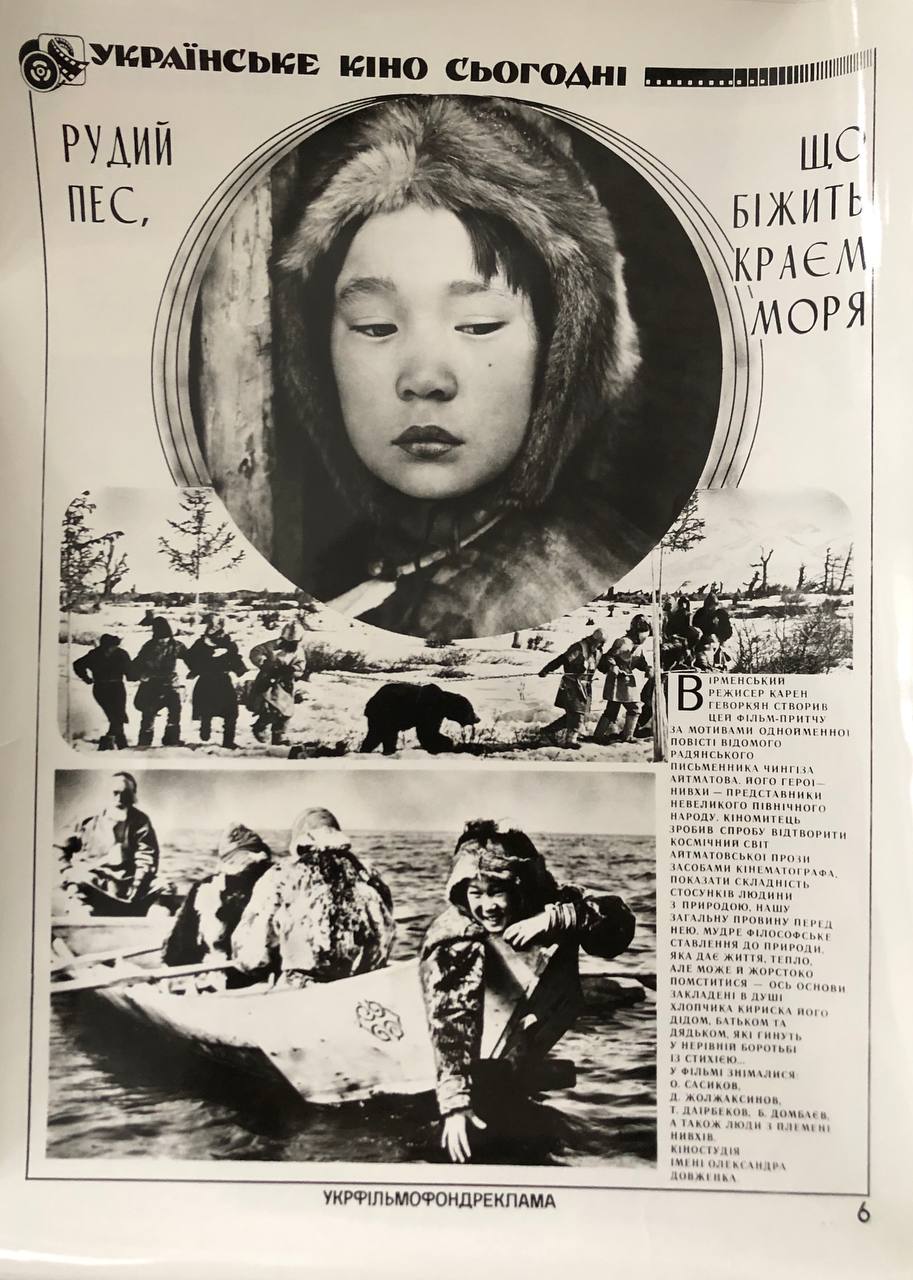
Spotted Dog Running at the Edge of the Sea / Riabyi pes, shcho bizhyt kraiem moria
1990
Ukrainian SSR, Germany, Oleksandr Dovzhenko Film Studio, ZDF
132 min
Karen Gevorkian
Karen Gevorkian, Tolomush Okeev
Ihor Beliakov, Karen Gevorkian, Rudolf Vatinian
Baiarto Dambaev, Aleksandr Sasykov, Doskhan Zholzhaksynov, Tokon Dairbekov
The film depicts the life of the small northern indigenous people, the Nivkhs, who live on the shores of the Sea of Okhotsk. Every day, they face a harsh struggle for survival, while their lives are filled with everyday routines, customs, hunting, celebrations, death, and birth. Against this backdrop unfolds the story of a ten-year-old boy who, together with his grandfather, father, and uncle, goes on his first seal-hunting expedition. However, misfortune awaits the hunters as a fog descends over the sea, obscuring their view of the shore. When food supplies run out, the men decide to sacrifice their own lives to save the boy.
Spotted Dog Running at the Edge of the Sea is a legendary film of Soviet cinema, directed by the Armenian filmmaker Karen Gevorkian. A representative of the 1960s generation, he studied at VGIK alongside future cinema legends such as Gleb Panfilov, Alexander Askoldov, and Konstiantyn Yershov, and was considered one of the most talented young directors of his time. However, over a period of almost twenty years in the 70s and 80s, he made only two feature films (Here, On This Crossroads (1974) and August (1978)). His third film, Farewell Beyond the Border (1981), was canceled. It took him twelve years to make his next film, Spotted Dog Running at the Edge of the Sea.
Gevorkian spent nearly ten years working on the adaptation of Chingiz Aitmatov’s novel. In 1978, the film was launched at the Lenfilm studio, but production was later halted by the Creative Council’s decision. Work resumed only in 1986 at the Dovzhenko Film Studio in Kyiv. However, even after the second launch, production of the film took another four years.
One reason for the delay was the director’s unconventional approach. Inspired by the legendary film Nanook of the North, Gevorkian aimed to create a blend of fiction and documentary cinema. He closely observed the real lives of his characters, allowing them to acclimate to and become comfortable with the camera. The result was a poetic form of docudrama, ethnographic cinema, and a testament to his grand style. Spotted Dog Running at the Edge of the Sea is a unique phenomenon in all of Soviet cinema. It’s no wonder that when the film was released, domestic critics were unsure how to react. Only later, after numerous festival successes, did it achieve the status of a cult film.



